poetry will find you, learn with every bit | inspiration archive for Katya Danziger
Don't wanna be here? Send us removal request.
Photo
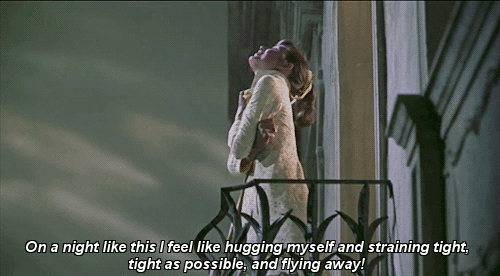
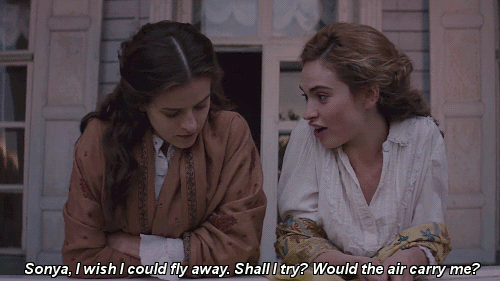

[7/10 female characters] - natasha rostova, war and peace
Natasha was happy as she had never been in her life. She was at that highest pitch of happiness, when one becomes completely good and kind, and disbelieves in the very possibility of evil, unhappiness, and sorrow.
3K notes
·
View notes
Photo

Venerable Sergius of Radonezh, 1899, Mikhail Nesterov
Medium: oil,canvas
122 notes
·
View notes
Text
The state of humanity’s imagination about the future
What is the state of the public’s imagination of the future or its capacity to imagine the future? To what extent can individuals understand or imagine social, political or economic arrangements that differ from the present? How valid, reasoned, rich in detail, indicative of independent thought, creative, or some sense interesting is the capacity of individuals to think about possible, probable or preferable futures?
I think a futurist literacy could measure this capacity. But in the absence of such research a source of qualitative evidence exists in the form of observations from futurists and practitioners who, in whatever field, have an eye on a more distant horizon. So, when I come across quotes from people who are in a position to make informed judgments about imagination of the future or futurist literacy or whatever we might call it, I put them in my notes. Although I won’t argue for it here, I’m somewhat optimistic about humanity’s ‘futurist awakening’. However, in a great many context I’m willing to bet that the following characterizations prevail:
1. From an interview with UCLA Professor Russell Jacoby on Changesurfer radio, ‘The Decline of Utopianism and the Public Intellectuals’, from June 6, 2010. Jacoby teaches a course on Utopian thought, and is author of The End of Utopia: Politics and Culture in an Age of Apathy.
“When I teach this class on utopian thought I ask students…design your own utopia, or what should utopia include. And generally I’m amazed at the poverty of imagination–how limited people can think.”
2. This quote is from Vera Novak, a green building early adopter and blogger, and the first person to receive the US Green Building Council LEED certification:
“I had the opportunity to work with a very progressive design team, which had full participation of the owner, contractor, designer, and engineer in a highly integrated process. They were amazing in their ability to deliver on project specifications. At first, I thought there was no more room for improvement, they were so exemplary. But there was an Achilles heel, and that was the ability to collectively see and design a future state which transcended the limitations of current assumptions. They were their own obstacle.”
http://www.ecobuildtrends.com/2012/11/giving-thanks-for-opportunity-to-create.html
3. The following is from an interview with Reinhold Martin, by Lee Stickells and Charles Rice. Martin is author of Utopia’s Ghost:
“Much of the impetus for writing the book came from sitting on design juries and teaching studios in which it was clear, time and again, that students were simply unable to think structural change in the present. ‘‘Architecture or revolution?’’ had ceased to be a question. Not universally, but predominantly.”
“The utopian function of the university as a world apart, always-already compromised and ambivalent to be sure, is itself in danger of vanishing altogether.”
http://www.scribd.com/doc/93395957/Interview-With-Reinhold-Martin-Utopia-s-Ghost-2010-Architectural-Theory-Review p. 325
4. Joseph Coates, a globally recognize name in futures thinking, had this observation in the book Viable Utopian Ideas: Shaping a Better World:
“If there is any hope of utopian thinking, there must be a broad-based change in thinking about long-term futures, in ways that go beyond relief of the current problems. Would-be utopians must supply complex detailed images of the social, economic, political, and personal lives of all people if they are to have any credibility or have any value in directing the evolution of society. Utopian visions must be at least as grainy and engaging as their dystopian competitors.
Numerous things underline the absence of positive thinking about the future but at its core is a fundamental lapse in education, in thinking positively, in thinking systematically, and in thinking optimistically. A recent issue of the New Scientist reported on a contest looking merely to 2050; none of the contestants dealt well with the social and personal aspects of life.
My own experience, reported elsewhere, in conducting 250 people at a World Future Society meeting through a three-hour exercise on the next thousand-year future, was disappointing. People were asked as a wrap-up to create a picture or an image of some tiny piece of life in the world 3000. The responses could have been drawn from situations found in the previous six months of the New York Times.”
Creating the School You Want: Learning @ Tomorrow’s Edge (Educational Futuristics). Chapt. 4, Utopia: An Obsolete Concept. pp. 29-34. (Among its wealth of suggestions, future studies is proposed as the core of the k-12 curriculum.)
2 notes
·
View notes
Text
Graph technology promotes the evolution of Artificial Intelligence (AI). It interlinks data and defines relationships to model real-world complex and dynamic links between entities. It is an excellent tool for inferring relationships and empowers AI by presenting context. In the enterprise ecosystem, it is imperative to recognize that the data framework supporting AI holds equal significance as the outputs it generates. Therefore, incorporating the data used and produced by AI services becomes essential when making crucial decisions regarding AI. Also, a comprehensive understanding and integration of the data ecosystem are imperative to ensure optimal outcomes and maximize the value derived from AI initiatives.
1 note
·
View note
Text
The Philosophy of Relational Ontology
Relational ontology is a branch of metaphysics that focuses on the idea that entities exist and gain their meaning through their relationships with other entities, rather than being independent and self-contained. It challenges the traditional, substance-based ontology, which views entities as possessing intrinsic properties that define them in isolation. In relational ontology, the essence or identity of things is shaped by the web of relations in which they are embedded.
1. Core Concepts of Relational Ontology
Being-in-Relation: The foundational idea of relational ontology is that entities are defined by their relations rather than their inherent qualities. In this view, no entity exists in isolation; rather, all beings are interconnected, and their existence is shaped by their relationships with others. This contrasts with the traditional substance ontology, which sees entities as having intrinsic, unchanging properties.
Relational vs. Substantial Ontology: Substantial ontology posits that things exist independently and their identity is determined by their internal characteristics. Relational ontology, by contrast, holds that the essence of a thing arises from its relations to other things, making these relations central to the understanding of existence.
2. Historical and Philosophical Roots
Process Philosophy: A key influence on relational ontology comes from process philosophy, especially the work of Alfred North Whitehead. In process philosophy, reality is understood as a series of interconnected events and processes, with entities constantly in flux, shaped by their interactions with others. Whitehead’s concept of actual occasions and the interrelatedness of events is foundational to relational thinking.
Phenomenology and Existentialism: Philosophers like Martin Heidegger and Maurice Merleau-Ponty also emphasize the relational nature of existence. Heidegger’s concept of being-with-others (Mitsein) highlights how human existence is fundamentally relational, and Merleau-Ponty explores how perception and embodiment are shaped by our relationships with the world and others.
Eastern Philosophy: Relational ontology is often compared to ideas from Buddhism and Taoism, which emphasize the interconnectedness of all things. The Buddhist notion of dependent origination (pratītyasamutpāda) states that all phenomena arise in dependence on causes and conditions, denying the existence of independently existing entities.
3. Relational Ontology in Social and Political Philosophy
Identity and Social Relations: In social philosophy, relational ontology is applied to understand how personal and social identity is formed through relations. Feminist philosophy and social constructivism often draw on relational ontology to critique individualistic and essentialist understandings of identity, emphasizing that identity is shaped by social, cultural, and historical contexts.
Interpersonal Ethics: Relational ontology informs ethical discussions about the self and others, suggesting that ethical behavior arises not from abstract principles, but from the recognition of our interdependent existence. Philosophers like Emmanuel Levinas argue that ethics is grounded in the relationship between self and the other, where the face of the other demands a response that acknowledges their humanity.
Communitarianism: In political theory, relational ontology is aligned with communitarianism, which critiques liberal individualism. Communitarians argue that individuals are deeply embedded in social and communal relationships, and these relationships are essential for understanding justice, rights, and responsibilities.
4. Relational Ontology in Science and Environmental Ethics
Quantum Physics and Relational Ontology: Some philosophers argue that modern physics, particularly quantum mechanics, supports a relational view of reality. Quantum entanglement, for instance, suggests that particles do not have definite properties until they interact with other particles, supporting the idea that entities are defined by their relations.
Ecological and Environmental Ethics: Relational ontology also plays a significant role in environmental philosophy. It challenges the anthropocentric view that humans are separate from nature, emphasizing instead that humans are part of a larger ecological web. Deep ecology and other environmental movements adopt relational thinking to advocate for the intrinsic value of ecosystems and the interdependence of all life forms.
5. Critiques and Challenges
Objectivity and Relational Ontology: Critics of relational ontology question whether it can account for objective knowledge. If entities are only understood through their relations, it may be difficult to establish an objective foundation for truth. Relativism is a potential problem if all meaning is seen as dependent on particular relationships and contexts.
The Problem of Individual Autonomy: Another critique focuses on the implications for individual autonomy. If entities, including persons, are fully constituted by their relationships, critics argue that this could undermine the idea of personal freedom and responsibility. Relational autonomy attempts to address this by emphasizing that autonomy itself is relational, shaped by social interactions and dependencies.
6. Relational Ontology in Contemporary Philosophy
Poststructuralism and Deconstruction: In poststructuralism, relational ontology resonates with philosophers like Jacques Derrida, who emphasize the instability of meaning and the play of differences. Deconstruction challenges the notion of fixed identities and emphasizes the relational nature of language, meaning, and existence.
New Materialism: In new materialist thought, relational ontology influences discussions about the agency of matter and the interconnectedness of human and non-human entities. Philosophers like Karen Barad draw on quantum physics to argue that matter itself is relational, challenging the traditional divide between subjects and objects.
7. Relational Ontology in Religion and Theology
Theology and Relationality: In theology, relational ontology has been influential in discussions of the nature of God and divine action. Process theology builds on the relational ideas of process philosophy to argue that God is not a distant, unchanging entity, but is dynamically involved in the unfolding of the world through relationships with creation.
Interfaith Dialogue and Relational Being: Relational ontology also plays a role in interfaith dialogue, where understanding religious differences requires an appreciation of the relational context in which beliefs and practices develop.
Relational ontology challenges the traditional notion of independent entities with fixed identities, proposing instead that existence and meaning are fundamentally shaped by relationships. This approach has profound implications across philosophy, from metaphysics and ethics to politics, science, and theology. By focusing on interconnectedness, relational ontology offers a framework for understanding the complexity of identity, ethics, and existence in a world defined by interaction and interdependence.
4 notes
·
View notes
Text
In this orchestra, a woman plays an instrument called a "Theremin," it is a quantum instrument played only with the energy of the hands, an instrument that forms a magnetic field and is played untouched.
Only three countries in the world have music schools that teach theremin: Russia, Japan and Ireland. The theremin was invented by Leon Theremin, a Russian who introduced it to Lenin in 1920. 🤔
192 notes
·
View notes
Text

"The Brothers Karamazov", Fyodor Dostoevsky (translated by Constance Garnett)
10K notes
·
View notes
Text

^ Susan Sontag describing herself in her journal.
3K notes
·
View notes
Photo
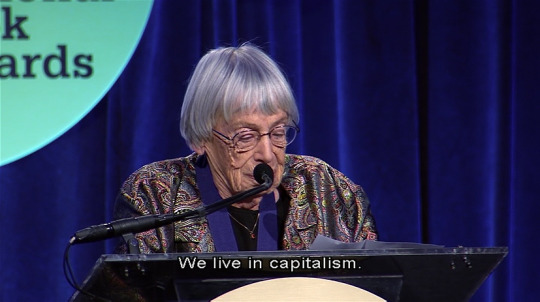
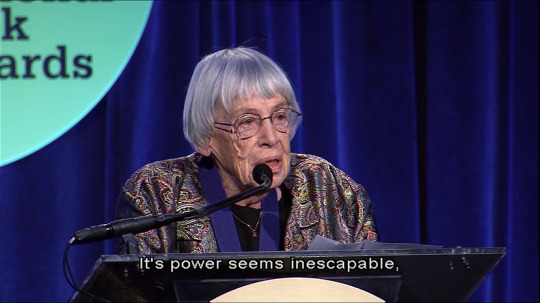
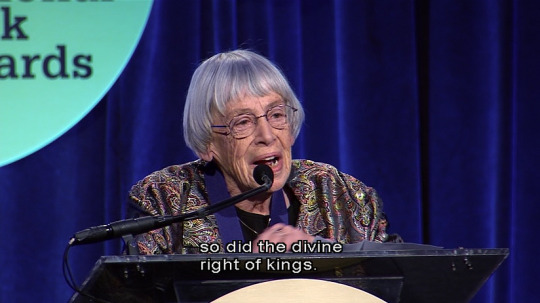
Worlds of Ursula K. Le Guin (2018), dir. Arwen Curry
148K notes
·
View notes
Text
Niantic is building a ‘geospatial’ AI model based on Pokémon Go player data
Scans of the world from Pokemon Go and Ingress are the backbone of Niantic’s AI model, which aims to navigate the world like ChatGPT spits out text.

youtube
2 notes
·
View notes
Text
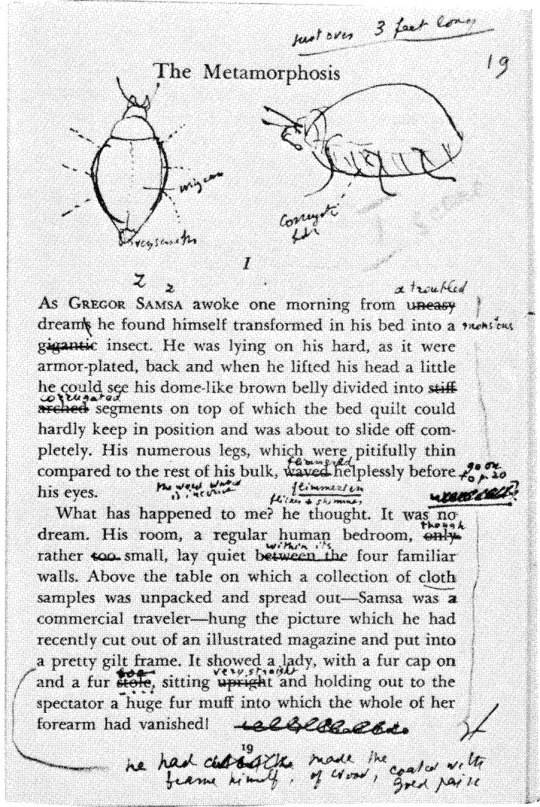
The opening page of "The Metamorphosis" (by Franz Kafka) from Nabokov's teaching copy
7K notes
·
View notes
Text
So, your life. There it is before you – possibly a road, a ribbon, a dotted line, a map – let’s say you’re 25, then you make some decisions, do things, have setbacks, have triumphs, become someone, a bus driver, a professor of Indo-European linguistics, a pirate, a cosmetologist, years pass, maybe in a family maybe not, maybe happy maybe not, then one day you wake up and you’re seventy. Looking ahead you see a black doorway. You begin to notice the black doorway is always there, at the edge, whether you look at it or not. Most moments contain it, most moments have a sort of sediment of black doorway at the bottom of the glass. You wonder if other people are seeing it too. You ask them. They say no. You ask why. No one can tell you.
A minute ago you were 25. Then you went ahead getting the life you want. One day you looked back from 25 to now and there it is, the doorway, black, waiting.
— anne carson, gloves on!
6K notes
·
View notes
Text
Four cities invited for the climate smart cities challenge
Nairobi, Stockholm – 14 April 2021
Curitiba (Brazil),
Bogotá (Colombia),
Bristol (UK)
Makindye Ssabagabo (Uganda)
These are the four cities officially invited to collaborate in the open innovation initiative Climate Smart Cities Challenge, with the aim of developing, testing and scaling cutting-edge solutions to reduce greenhouse gas emissions.
With the cities and respective challenges selected, the four cities will work on confirming arrangements, stakeholder engagement and challenge definition with support from the Climate Smart Cities Challenge partners: UN-Habitat, Viable Cities, Vinnova, Teknikföretagen, the Swedish Energy Agency, Smart City Sweden, Business Sweden, Expo 2020 Sweden and Nesta Challenges.
The work will result in an open innovation contest which will be launched at the Dubai Expo in October 2021.
Maria Rosendahl, Head of Industrial Policy, Teknikföretagen, said: “We are facing an age of unprecedented possibilities. In order to make the most of them we must focus on how we support innovation and development. Whether it is through new business models, aggressive business policy, modern regulations or joint efforts. The focus should be the same.”
The selected cities were chosen from applicants from all over the world through an open call application phase. The Climate Smart Cities Challenge focuses on specific areas that have the potential to reduce GHG emissions and at the same time deliver significant social impact, such as zero-carbon neighbourhoods, freight logistics management and green and affordable residential buildings.
It also addresses the capacities needed by local governments to work with a wide range of stakeholders, especially the private sector, in order to lead and deliver innovation that tackles societal problems.
Steven Bland, Climate Change and Innovation specialist, UN-Habitat, said: “By opening the process of defining solutions, rather than predetermining them in a call for proposals, new partnerships and collaborations become available that a local government might otherwise have been unaware of. The facilitated challenge definition design process prompts local governments to understand different local (and internal local government) perspectives on the nature of the challenge being explored.”
During the initial open call phase, each city was invited to share their aspirations to reduce GHG emissions, by identifying local challenges that would benefit from a multi-stakeholder and innovative approach, while also able to strengthen the capacity of local governments to procure, test and implement frontier technologies.
The City of Makindye Ssabagabo said: “Although the green homes concept is being adopted fast in urban cities in Asia, Europe and North America, the innovation is relatively new in Ugandan urban settings and this therefore calls for diverse international expertise with the participation of local stakeholders to pinpoint what will work best in order to reduce GHG emissions.”
The City of Bogotá said: “Solving this challenge demands a change in strategy. Important stakeholders include freight companies, but also research centers and universities, and local populations in peripheral areas, most often affected by the negative impacts of freight traffic.”
The City of Bristol said: “Where innovation is truly needed is in the model used to deliver housing by multiple stakeholders. Solving this problem could support not only housing that is affordable but also housing that meets a diverse need as well as the sustainable development goals, specifically those relating to health and well-being, and sustainable cities and communities.” -
The City of Curitiba said: “Curitiba aims at carbon neutrality in 2050. Improved energy efficiency in buildings will have to play a key role. One way to pursue carbon neutrality is by establishing zero-carbon areas in the city of Curitiba. The innovation competition will help identify and test a broad spectrum of low-carbon solutions in an integrated manner.”
At the local level, challenge-driven innovation helps to achieve sustainable development goals. Challenge competitions can contribute to the development of mission-oriented policies, by connecting multidisciplinary expertise and cross-sectoral perspectives with societal needs. City leaders are able to ensure that Innovative solutions, originated from challenges, are directed towards improving people’s lives in cities.
Olle Armstrand Dierks, Portfolio Strategist, Viable Cities said: “A real world test might even help reach a tipping point to behaviour change when involving many citizens in it, thus influencing many others. It enables transformative approaches to solving multiple societal challenges in an integrated and holistic way. A testbed can also demonstrate an emerging technology for regulators and engage regulators and policymakers in anticipating and shaping new regulations.”
UN-Habitat and partners are working closely to deliver operational, normative and financial support, in order to co-create solutions that will drive positive change and contribute to climate change mitigation and energy efficiency in cities.
About the partners
UN-Habitat is the United Nations programme working towards a better urban future. Its mission is to promote socially and environmentally sustainable human settlements development and the achievement of adequate shelter for all. UN-Habitat works with partners to build inclusive, safe, resilient and sustainable cities and communities. It promotes urbanization as a positive transformative force for people and communities, reducing inequality, discrimination and poverty and provides technical assistance, policy advice, knowledge and capacity building to national and local governments in over 90 countries.
Viable Cities is the strategic Swedish innovation programme for climate-neutral and sustainable cities, with the mission to achieve climate-neutral cities by 2030 with a good life for all within planetary boundaries. It gathers around 85 members from several different research fields, business, public sector and civil society. The programme is the project owner of CSCC, responsible for coordinating the challenge-driven innovation process.
Vinnova is Sweden’s innovation agency helping to build innovation capacity that contributes to sustainable growth. It focuses on enabling innovation that address societal challenges, by creating opportunities and incentives for organisations to collaborate and share knowledge and skills. Vinnova supports early stage experimentation and testing of new ideas that can make a difference in the world. In the CSCC, it will be one of the funding partners in the challenge to develop carbon-neutral infrastructures in the selected cities.
Teknikföretagen, the Swedish Association of Engineering Companies, works with 4.200 member companies, and has the mission to give its members the best possible competitive advantage, by promoting innovation and development in business. Small and large-scale companies are part of Teknikföretagen’s network, accounting for a third of Sweden’s exports. The organization is both a donor in the CSCC as well as a supporting partner, connecting its members to the innovative solutions derived from the challenge.
The Swedish Energy Agency works with the promotion of energy efficiency measures and investments in renewable energy technologies, leading society’s transition to a sustainable energy system. It also collaborates internationally with the aim to develop and disseminate knowledge for a more efficient energy use to households, industry, and the public sector. In the CSCC, the agency continues to support UN-Habitat and its partners to finance challenge-driven innovation processes and research.
Smart City Sweden is the Swedish government platform for sustainable city solutions, working with delegations and decision-makers from other countries interested in implementing Swedish solutions in their local context. The platform supports the CSCC as donors and also contributes with its vast expertise in different areas to explore smart and sustainable city solutions throughout the challenge.
Business Sweden is jointly owned by the Swedish state and the Swedish business sector with a mandate and a mission to help Swedish companies grow global sales and international companies invest and expand in Sweden. Business Sweden supports CSCC with expertise in international business development of smart city solutions as well as local market knowledge in all selected markets (Brazil, Colombia, United Kingdom and Uganda).
Expo2020 Sweden is responsible for the Swedish pavilion at the world exhibition Expo 2020 in Dubai, to be held from October 2021 to March 2022, in the United Arab Emirates. The Swedish pavilion The Forest is located in the sustainability district at the Dubai Expo 2020. It will focus on new ways to build The Smart Society, including topics such as tech, life science, next-generation transport, Industry 4.0, new materials, smart cities, circular bio-based economies, and more. It will support the CSCC in showcasing the solutions designed in the challenge process.
Nesta Challenges is an UK-based partner focused on facilitating the development of innovative solutions, through the design of challenge prizes and challenge-driven innovation methodologies. It exists to support people, organisations and society in achieving solutions that drive change, improve lives, and solve the most pressing problems. Nesta collaborates with UN-Habitat and partners in the CSCC planning and engagement plans, supporting different stages of the challenge process.
0 notes
Text
Bloomberg CityLab 2024
Mexico City, Mexico October 14 – 16, 2024
Organized by Bloomberg Philanthropies in partnership with the Aspen Institute, Bloomberg CityLab brings together global mayors alongside prominent city innovators, business leaders, urban experts, artists, and activists to discuss and discover replicable solutions to pressing issues.
Bloomberg CityLab was founded on the principle that the most important innovation is happening at the local level and that global impact can be achieved when cities share solutions.
Mayors Coming Together to Change the World
For over a decade, CityLab summits have crisscrossed the globe, gathering the most influential mayors and voices from hundreds of cities worldwide. Summits have made international headlines, and generated tangible takeaways for attendees. Past CityLab conferences have been hosted in New York, Los Angeles, London, Miami, Paris, Detroit, Washington D.C., and Amsterdam.
0 notes



